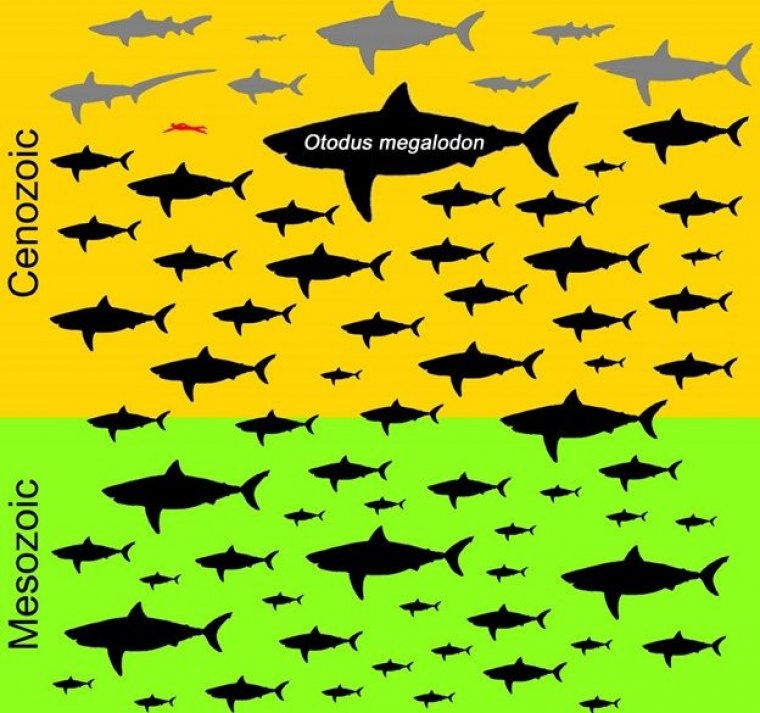| News / Science News |
Body size of the extinct megalodon shark is off the charts
A new study shows that the body size of the iconic gigantic or megatooth shark, about 15 meters (50 feet) in length, was indeed anomalously large compared to the body sizes of its relatives.

Maximum sizes of non-planktivorous sharks in the Lamniformes: modern (gray), extinct (black). Photo: Kenshu Shimada
Formally called Otodus megalodon, the fossil shark that lived 3.6 to 15 million years ago is receiving a renewed look for the significance of its body size in the shark world, based on a new study.
O. megalodon is commonly portrayed as a supersized, monstrous shark in novels and films. The scientifically justifiable maximum possible body size for the species, however, is about 15 meters, or 50 feet.
It is still an impressively large shark, and the new study shows how gigantic the shark was, according to Kenshu Shimada, a paleobiologist at DePaul University in Chicago and lead author of the study.
O. megalodon belongs to the shark group called lamniforms, but the biology of extinct forms is poorly understood because these cartilaginous fishes are mostly known only from their teeth.
Based on measurements taken from present-day non-planktivorous lamniforms, the study presents an equation that would allow estimations about the body length of extinct forms from their teeth.
The research demonstrates that O. megalodon is truly an outlier, because almost all other non-planktivorous sharks have a general size limit of 7 meters (23 feet), and only a few modern plankton-eating sharks, such as the whale shark and basking shark, are equivalent or come close to the size.
Warm-bloodedness has previously been proposed to have led to the gigantism (more than 6 meters, or 20 feet) in multiple lamniform lineages.
The new study proposes these sharks' live-bearing reproductive strategy as another possible cause for the evolution of their gigantism. (National Science Foundation)
YOU MAY ALSO LIKE





